E-mountainbike manufacturers in 2024 are feeling the need for speed! Increasingly more bike brands are turning their attention to racing, and expanding their portfolios with race-specific eMTB models that are suitable for both amateurs and pro riders. Haibike just jumped on the bandwagon, introducing the new HYBE 10.5, which takes on the race track with an alloy frame and new Yamaha PW-XM motor. We’ll tell you everything about it!
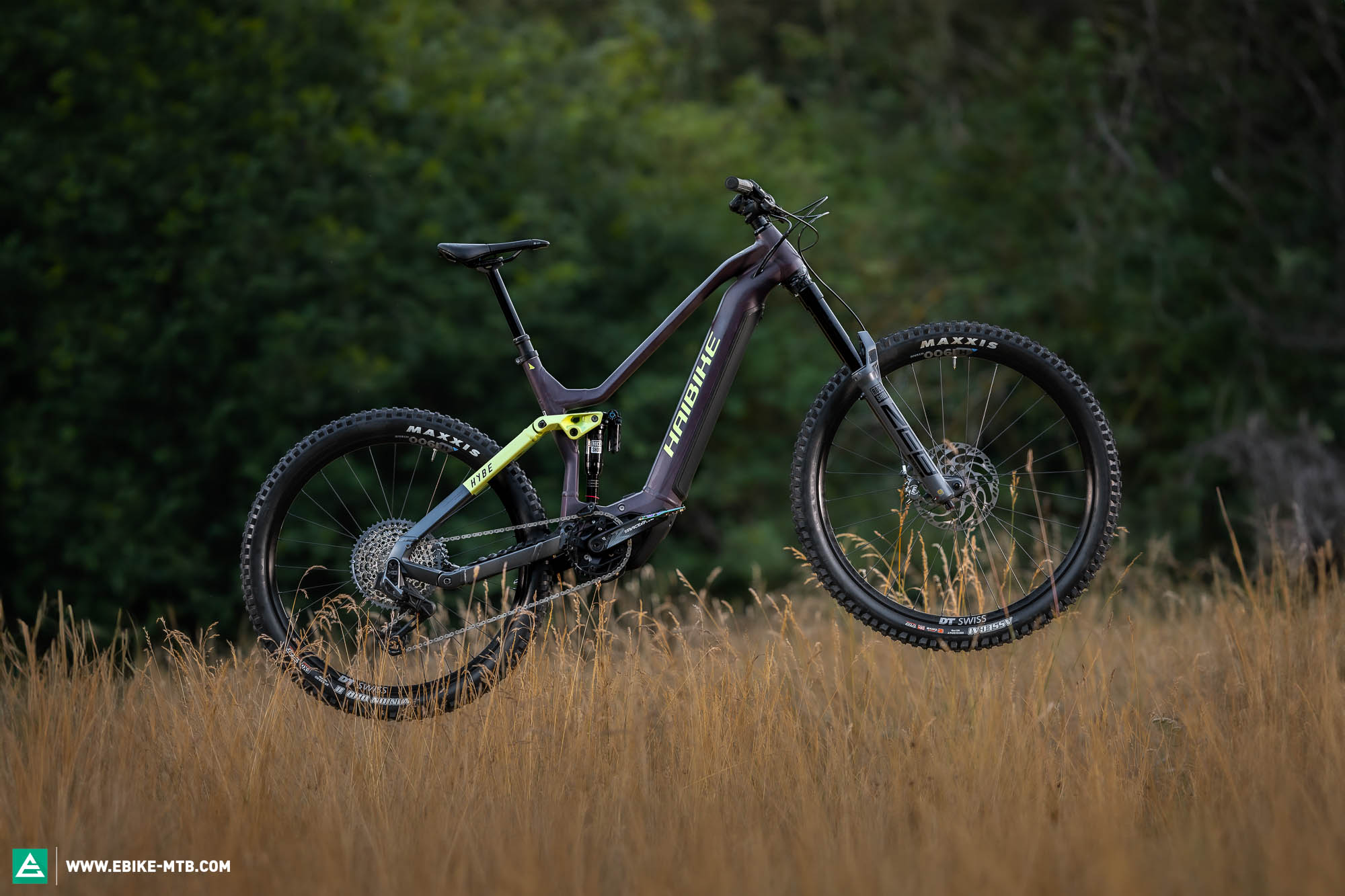
25.4 kg in Size M (Manufacturer’s specifications) | € 7,999 | Manufacturer’s website
The e-mountainbike scene is alive and kicking, especially when there’s race tapes and stopwatches involved, regardless of whether the trail is pointing up or downhill. More and more manufacturers are expanding their eMTB portfolio with powerful race-oriented models.
However, our big 2024 E-MOUNTAINBIKE comparison test proves that the market offers far more than just rowdy race eMTBs with bags of power and demanding handling. Here the Orbea WILD and Canyon Strive:ON won the real race, securing Best in Test and Best Buy Tip, respectively. While both are thoroughbred racers, they not only dominate the racetrack, but also offer outstanding all-round capabilities for “normal riders”.
As one of the undisputed pioneers of e-mountainbiking, Haibike have been an integral part of the eMTB racing circus since day one. At the very first races, they turned up with near-production eMTBs, like Andrea Garibbo’s Haibike AllMtn SE from back in 2022. The German manufacturer didn’t have a race-specific bike in their stable until the launch of the HYBE in 2023, which brought forth Haibike’s new “Power Sports” category. Last autumn, we asked our fastest editors to put the HYBE 9 through the wringer. Our verdict: the HYBE 9 impressed us with good-natured handling and good touring characteristics – probably not what Haibike had in mind. With the HYBE 10.5, the team at Haibike took a different approach, gifting their race horse with an alloy skeleton and new Yamaha PW-XM motor. To try one for yourself, you’ll have to fork out € 7,999. If that sounds a little much for your liking, keep reading our news to hear our take on the new HYBE 10.5 – and it won’t cost you anything at all!
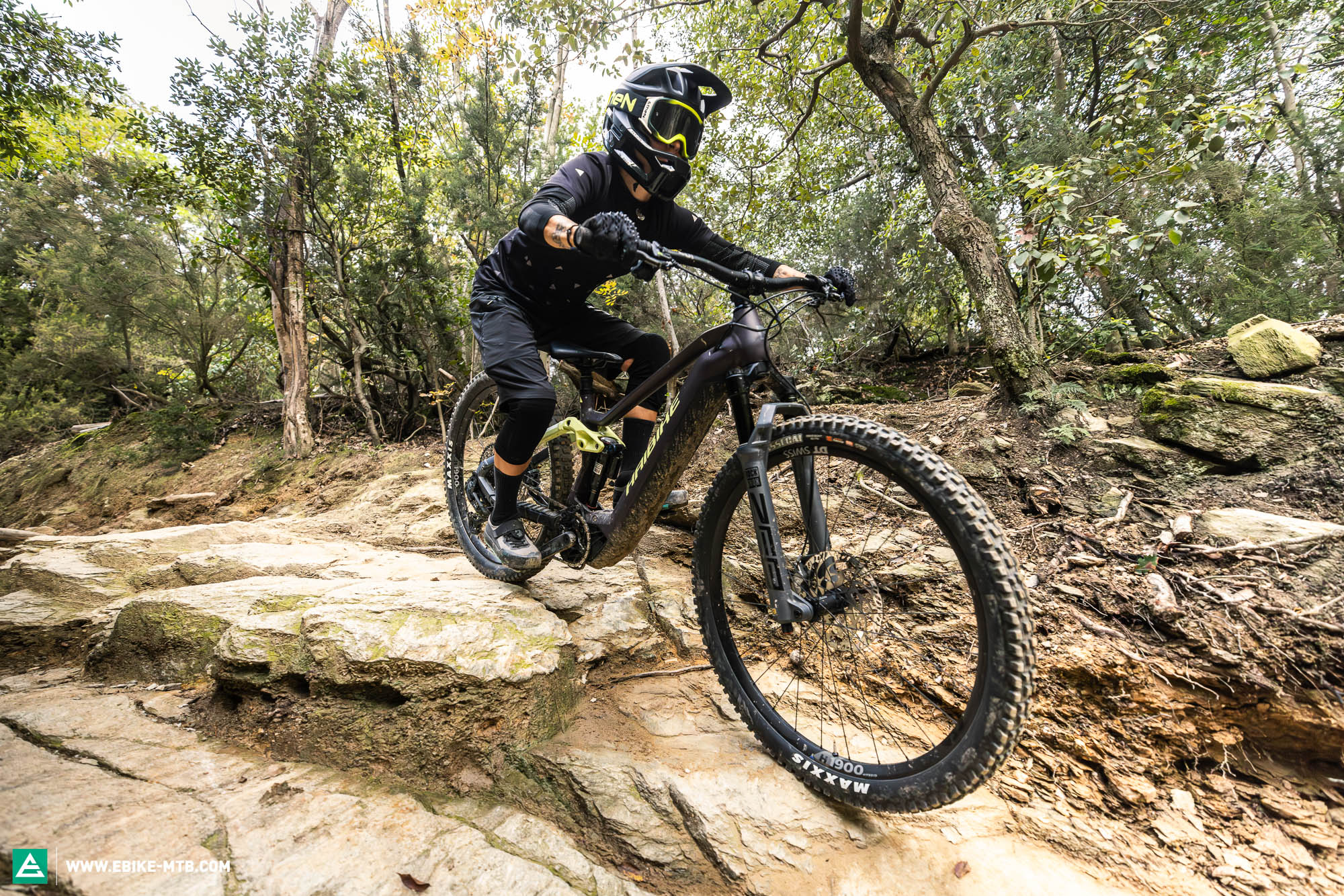
The new Haibike HYBE 10.5 in detail
The biggest changes concern the frame and motor system. While last year’s HYBE 11 and HYBE 9 relied on a carbon main frame coupled with an alloy swingarm, the new HYBE 10.5 is made entirely of aluminium. And while the alloy version is still very similar to its carbon siblings, its silhouette is slightly less complex, and it doesn’t have the origami-inspired head tube design. You’ll see the other big change when you look down between the cranks.
The HYBE 10.5 relies on a Yamaha PW-XM motor rather than a Bosch Performance Line CX or CX-Race drive. Based on the Yamaha PW-X3 motor, the letter M in the name suffix stands for the magnesium housing, and also for Morimachi, the bike-friendly town in Japan where the motor is produced. According to Yamaha, the PW-XM dissipates heat better and the magnesium housing also shaves off an additional 150 g (2.6 kg instead of 2.75 kg).
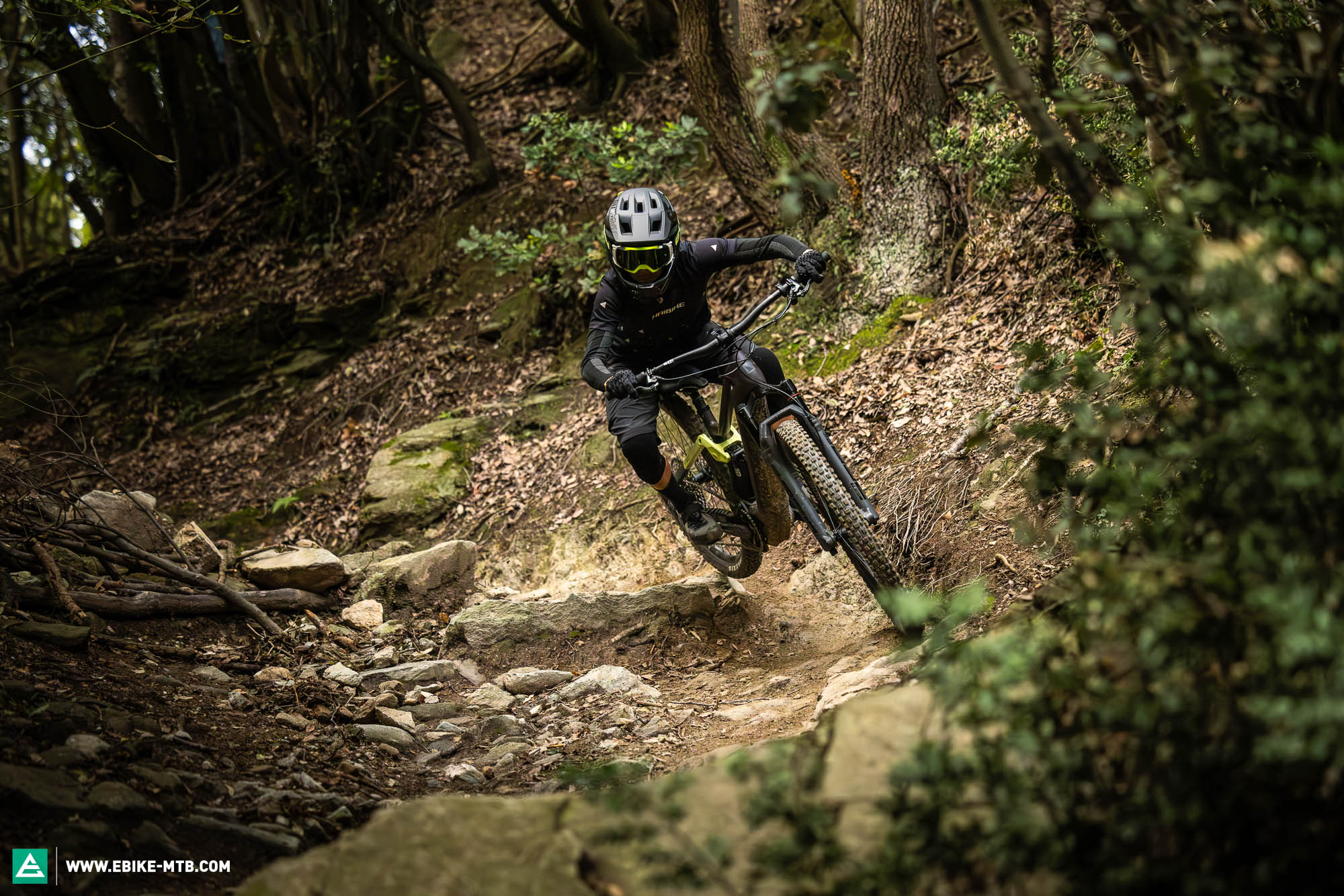
Unfortunately, the motor integration isn’t quite as eye-catching as the exposed Bosch motor on the HYBE 9. Part of this is because of the battery integration – while the Bosch drive was rotated to allow the battery to slide out underneath it, the Yamaha bike has a more conventional system, with the 720 Wh Intube battery sitting right on top of the motor and a big hatch in the bottom of the down tube for removal.
The HYBE 9 with carbon frame and Bosch motor system we tested weighed in at 26.14 kg in size L. Despite the aluminum frame, the weight doesn’t seem to have changed much: According to Haibike, the aluminum HYBE weighs 25.4 kg in size M.
If you don’t care about weight but really appreciate ease of maintenance, here’s some good news for you: the alloy version of the HYBE 10.5 forgoes a headset cable routing system and relies on good ol’ conventional internal routing instead, with cable ports on the head tube. It does, however, employ Haibike’s proprietary Modular Rail System on the down tube (MRS), which allows you to secure a range of different accessories directly to the bike, like a water bottle, a lock or even a frame bag.
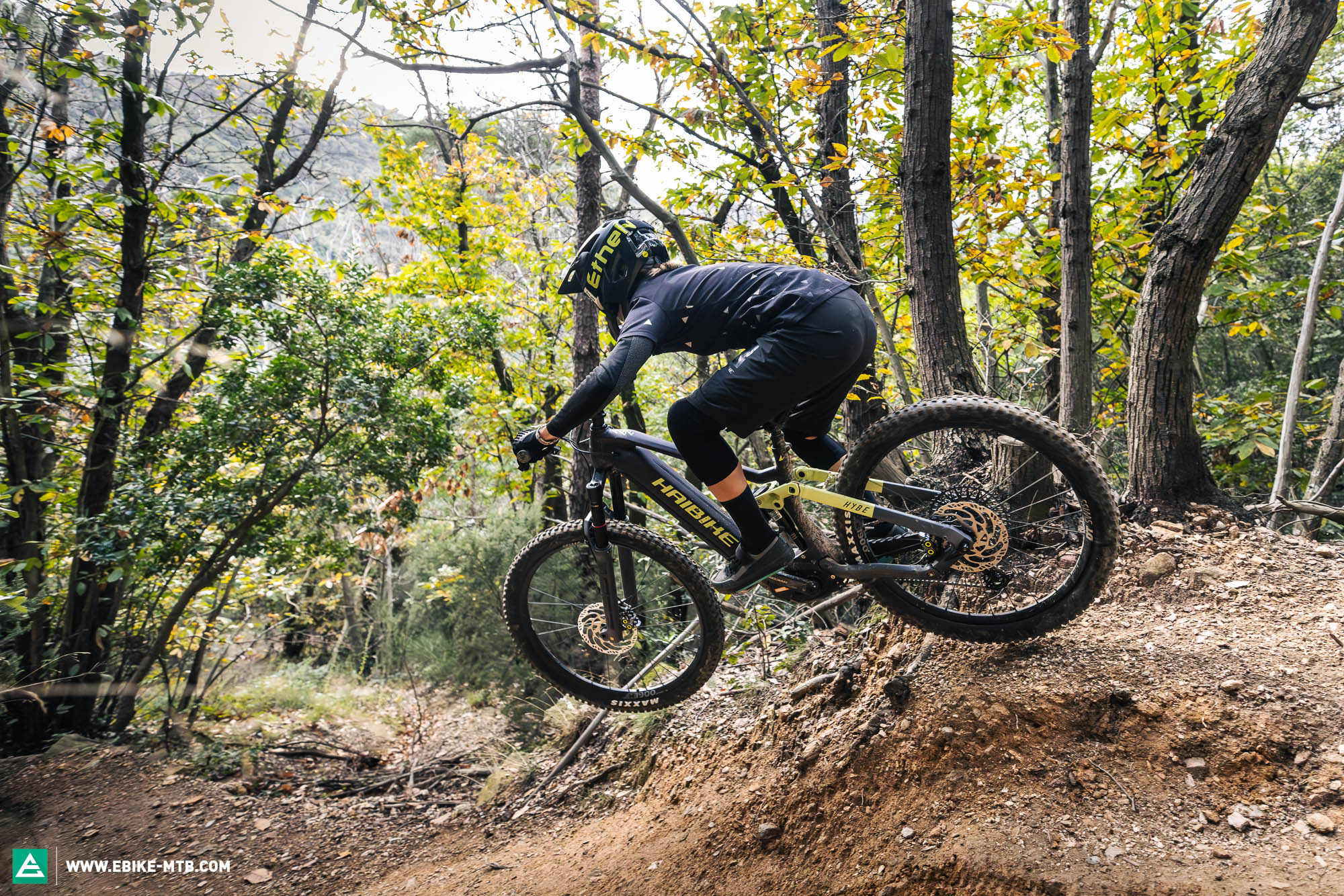
The spec and geometry of the Haibike HYBE 10.5 at a glance
To go along with the alloy frame, the new Haibike HYBE 10.5 features a DT Swiss H1900 alloy wheelset. RockShox supply the suspension, consisting of a 170 mm ZEB Ultimate fork and SuperDeluxe Ultimate air shock controlling 160 mm of rear travel. Shifting is taken care of by a SRAM GX Eagle AXS Transmission drivetrain.
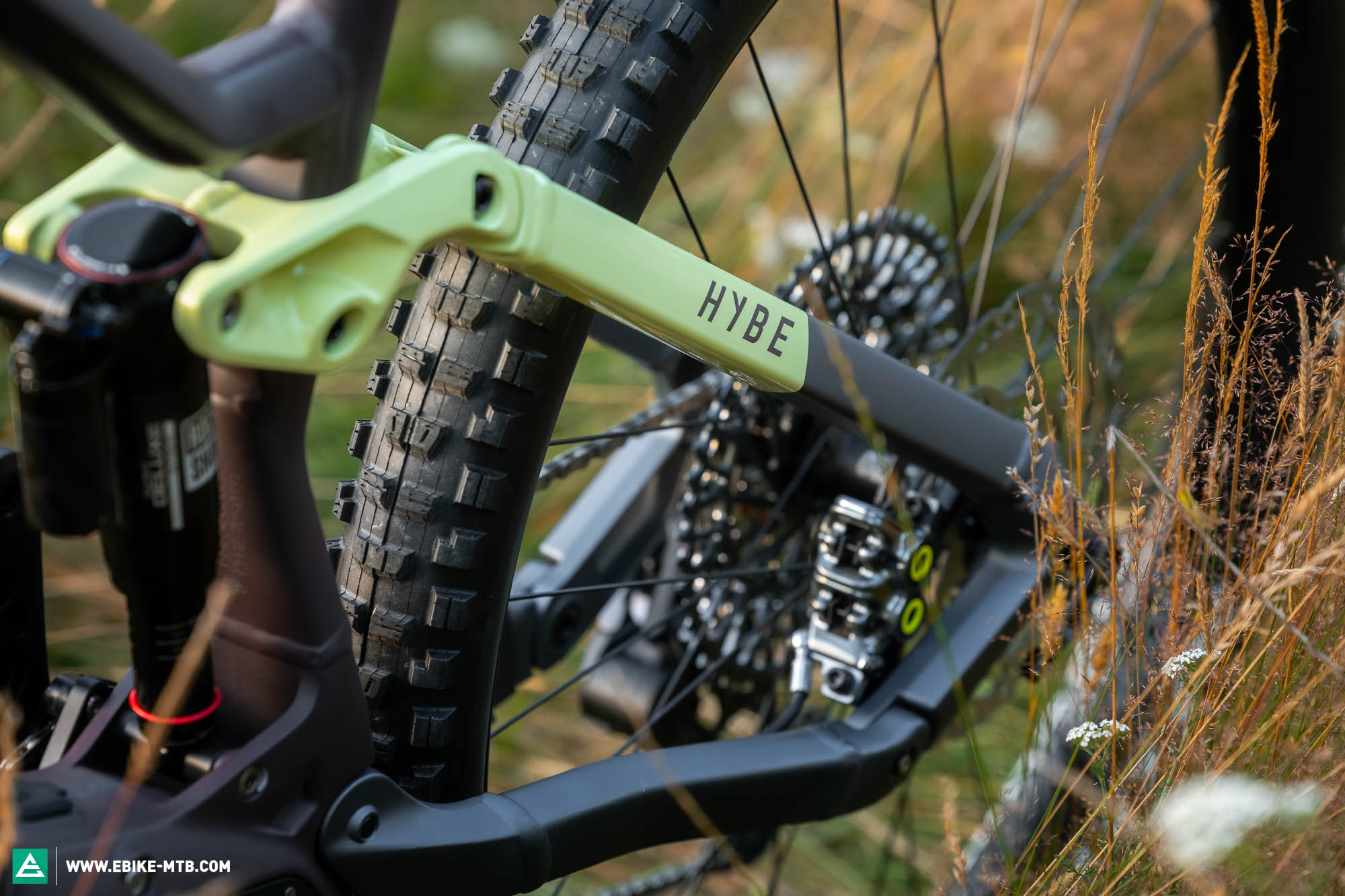
The powerful MAGURA MT7 brakes are on stopping duties. If you want to find out how the brakes fared against 13 of the hottest brakes of the season, you should read our big 2024 disc brake comparison test over at our sister magazine ENDURO.
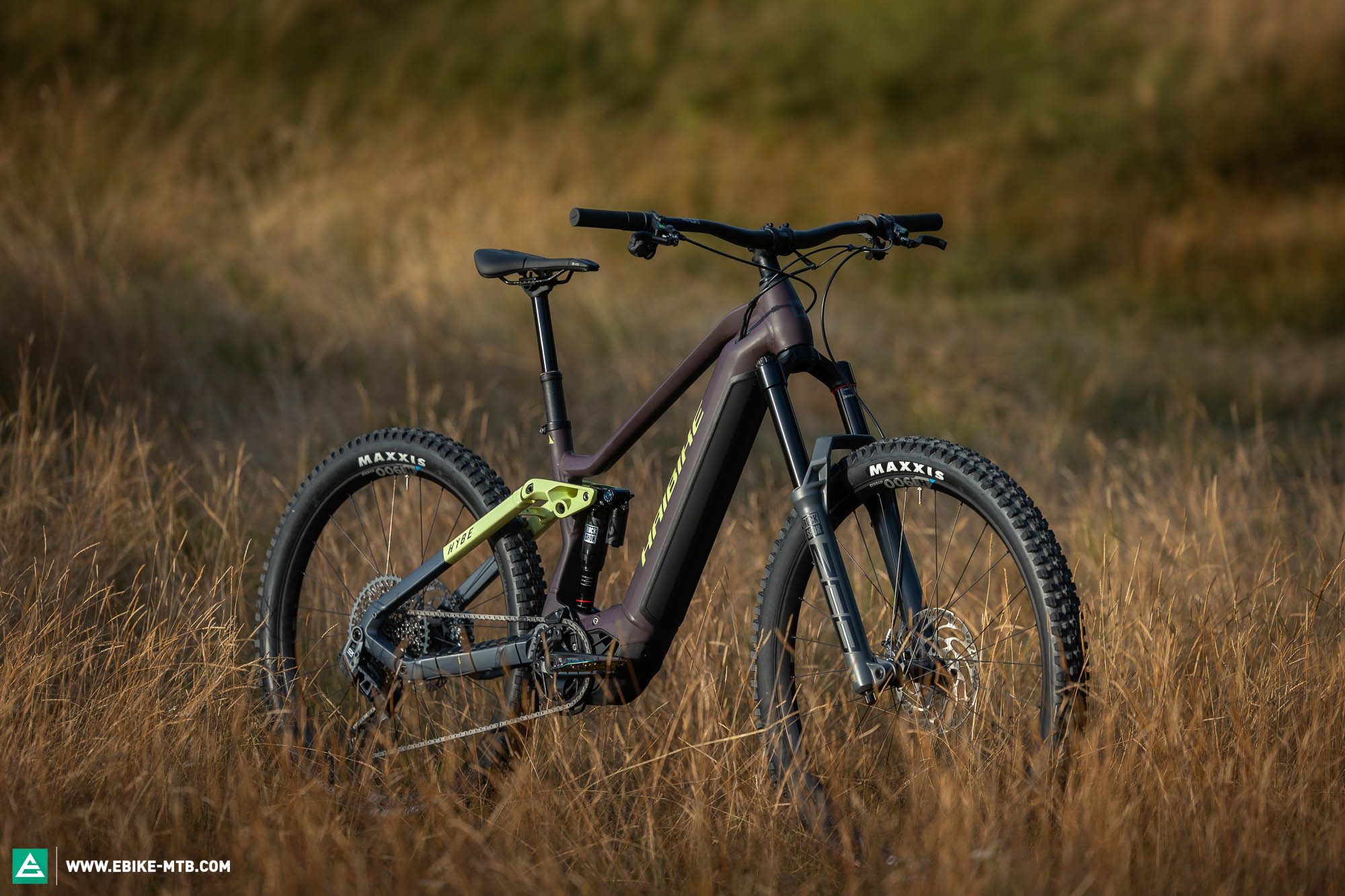
Haibike HYBE 10.5
€ 7,999
Specifications
Motor Yamaha PW-XM 85 Nm
Battery InTube 720 Wh
Display Yamaha Interface - X
Fork RockShox ZEB Ultimate 170 mm
Rear Shock RockShox SuperDeluxe Ultimate 160 mm
Seatpost Dropper-Post
Brakes Magura MT7
Drivetrain SRAM GX Eagle AXS Transmission 1x12
Stem Haibike Components The Stem +++
Handlebar Haibike Components The Bar +++ 780 mm
Wheelset DT Swiss H1900 29"/27.5"
Tires MAXXIS ASSEGAI/ Minion DHR II MaxxTerra Exo+ 2.5"/2.6"
Technical Data
Size S M L XL
Weight 25,4 kg (manufacturers specification)
Perm. total weight 120 kg
Max. payload (rider/equipment) 94 kg
Trailer approval yes
Kickstand mount yes
Specific Features
Modular Rail System
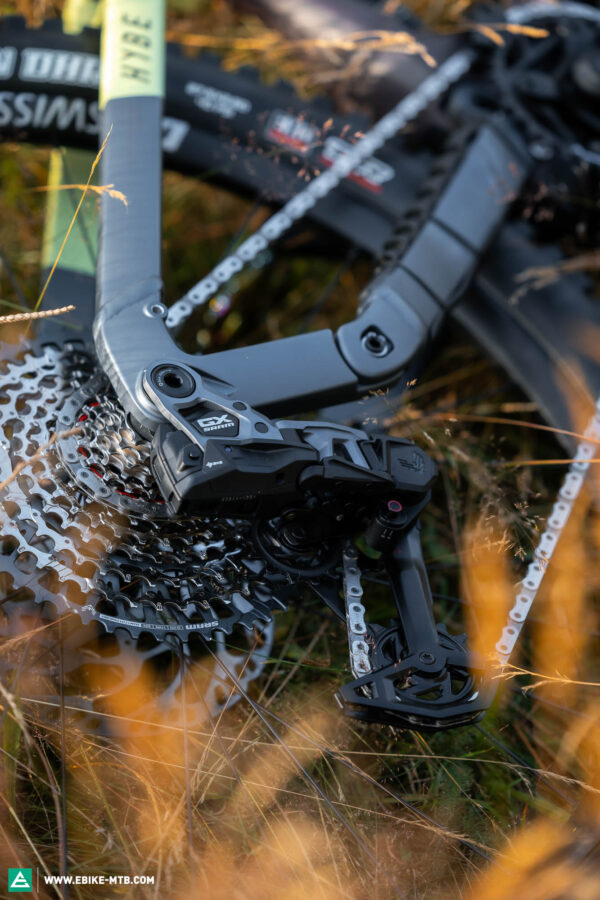
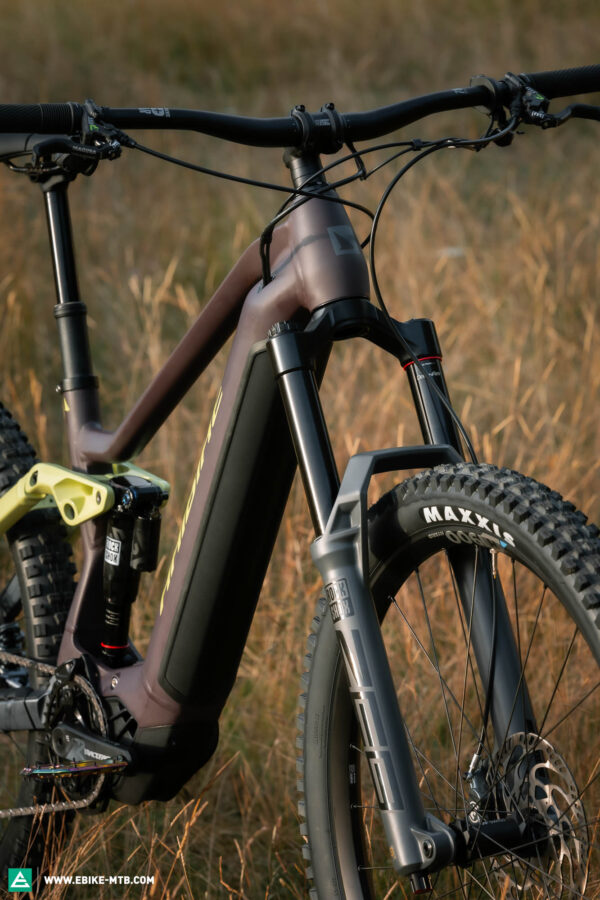
The alloy HYBE 10.5 relies on a slightly different geometry than its carbon predecessor. And because it wouldn’t be a new eMTB without the geometry being in some way longer and slacker than the previous version, you’ll find that the new HYBE is longer and slacker than the previous model.
The wheelbase has grown, despite the smaller 27.5” rear wheel, and the chainstays are on the long side at 460 mm across all sizes. At 64°, the head angle is half a degree slacker, and overall, the wheelbase is 2-3 cm longer in all four sizes (S-XL) which, according to Haibike, should improve stability in demanding race conditions.
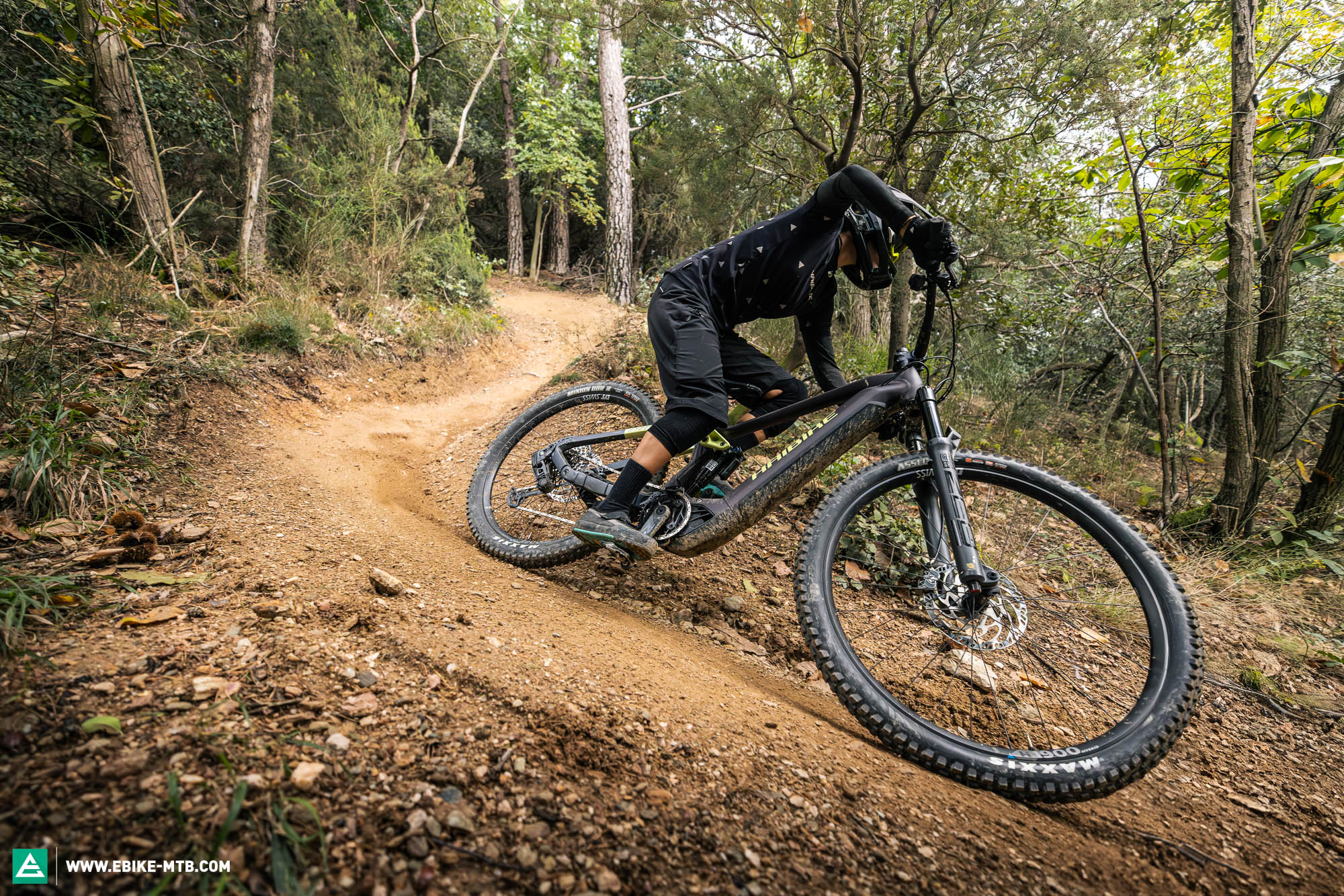
The reach, on the other hand, has only grown slightly in sizes S and M, while the bigger L and XL frames have a rather moderate reach of 468 mm and 500 mm, respectively. Stack height has grown significantly. While testing the Haibike HYBE 9, we were impressed with its high front end, which integrates you well into the bike and inspires huge amounts of confidence on steep descents. Now, the stack of the HYBE 10.5 is even higher, but only a thorough test will reveal whether this is actually an advantage or if it results in an imbalanced weight distribution. Unfortunately, Haibike haven’t revised the long seat tube (465 in size L), which already restricted freedom of movement on the previous HYBE 9.
| Size | S | M | L | XL |
|---|---|---|---|---|
| Seat tube | 410 mm | 440 mm | 465 mm | 495 mm |
| Top tube | 571 mm | 601 mm | 627 mm | 660 mm |
| Seat tube | 120 mm | 120 mm | 130 mm | 140 mm |
| Head angle | 64° | 64° | 64° | 64° |
| Seat angle | 76° | 76° | 76° | 77° |
| Chainstays | 460 mm | 460 mm | 460 mm | 460 mm |
| BB Drop | 16 mm | 16 mm | 16 mm | 17 mm |
| Wheelbase | 1,225 mm | 1,255 mm | 1,282 mm | 1,317 mm |
| Reach | 415 mm | 445 mm | 468 mm | 499 mm |
| Stack | 649 mm | 649 mm | 659 mm | 668 mm |
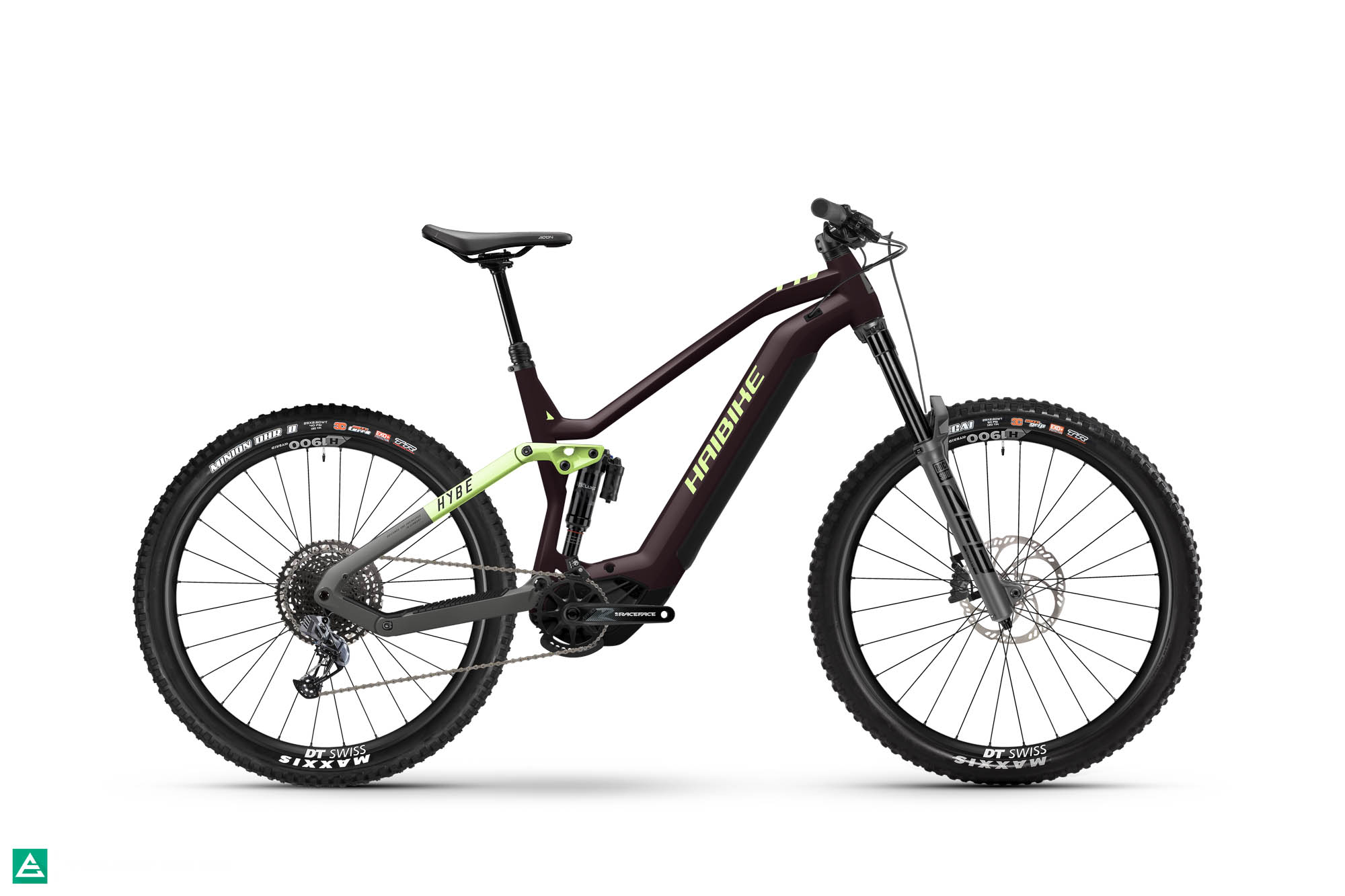
Our initial thoughts about the new Haibike HYBE 10.5
The new Haibike HYBE 10.5 has a few interesting features which are likely to make it an interesting option for amateur racers. There’s the (relatively) accessible entry-level price of € 7,999, the consistent spec and maintenance-friendly cable routing. Moreover, the Haibike HYBE 10.5 is also an attractive option for more serious racers who are looking for an alternative to carbon. However, until we get our hands on one, we can’t tell you whether the HYBE 10.5 has retained the good-natured character of its predecessor or if it has transitioned into a thoroughbred racer with its alloy frame and Yamaha motor. The change of motor system alone can have a huge impact on the handling of a bike, as we found out in our comparison test with four near-identical Simplon Rapcons with different motors. As soon as we’ll get our hands on one, we’ll let you know how the Haibike HYBE 10.5 handles, how fast it goes and how fun it feels.
Our conclusions about the Haibike HYBE 10.5
The new Haibike HYBE 10.5 rolls into the racing season with some major changes, like the revised, racing-oriented geometry. Unfortunately, Haibike have missed the opportunity to address other important issues such as the long seat tube, which let down the previous iteration of the HYBE. We can’t say just yet whether the switch to an alloy frame and Yamaha PW-XM motor will make it more or less suitable for, but we’re looking forward to getting our hands on one to find out. As soon as we’ve gathered some riding impressions, you’ll find out here first.
For more information, visit Haibike.com
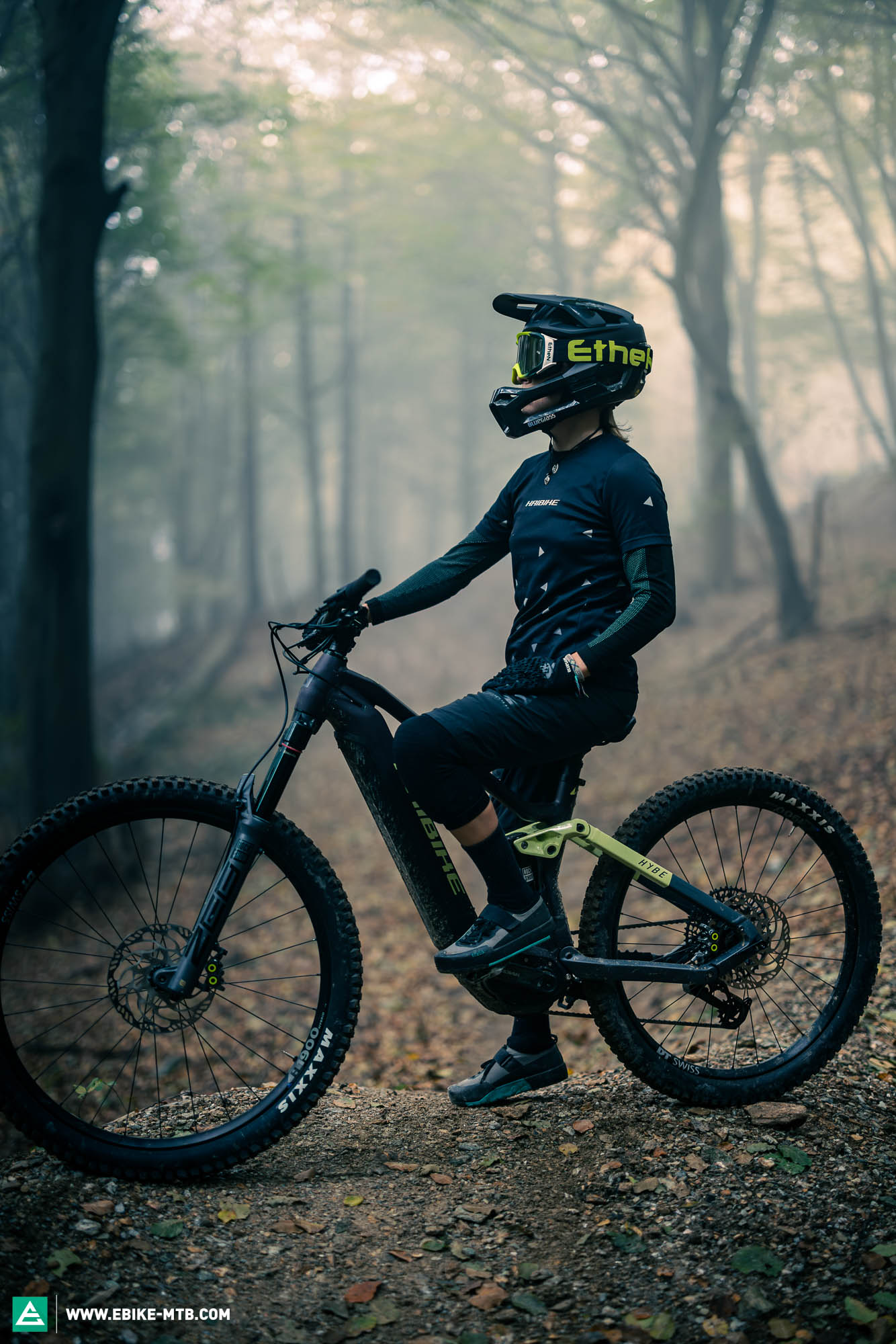
Did you enjoy this article? If so, we would be stoked if you decide to support us with a monthly contribution. By becoming a supporter of E-MOUNTAINBIKE, you will help secure a sustainable future for high-quality cycling journalism. Click here to learn more.
Words: Rudolf Fischer Photos: Haibike








